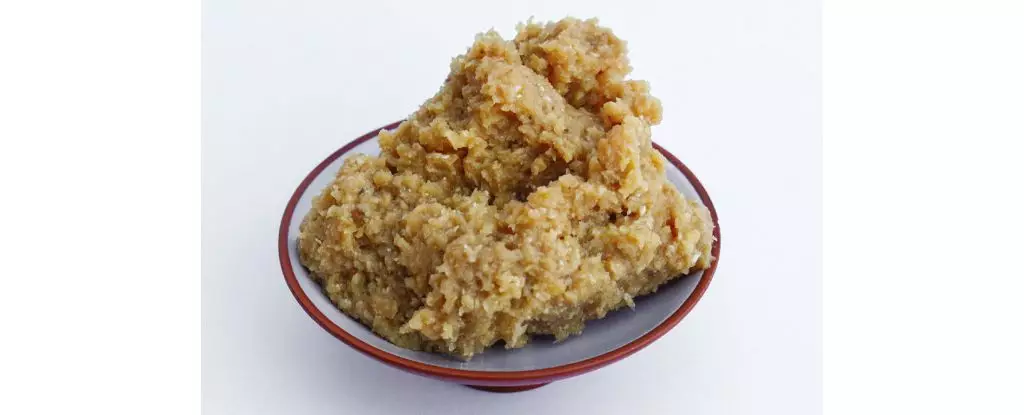Imagine experiencing the beloved flavors of miso in a completely different context—up in the infinite expanse of outer space. Recent experiments aboard the International Space Station (ISS) have uncovered that miso, a staple in Japanese cuisine, takes on a unique flavor profile when produced in microgravity and higher radiation conditions. While miso is traditionally lauded for its salty and savory taste, results indicate that space miso is not just a variation but an unexpected culinary evolution. Such findings inspire a sense of wonder and curiosity about how life, in every form, adapts to new environments.
The study orchestrated by researchers, including Maggie Coblentz from the Massachusetts Institute of Technology, capitalizes on the interplay between microbes and their surroundings. By establishing fermentation under the ISS’s unique conditions, the scientists have illuminated how microbial communities can thrive and diversify beyond Earth, challenging our preconceived notions about sterilized cosmic environments.
The Science of Flavor: Results from Space
The experiment was constructed with meticulous care. Researchers dispatched batches of miso starter—comprised of steamed soybeans, salt, and a fermentation fungus—across three distinct environments: Cambridge, Massachusetts; Copenhagen; and the ISS. The miso broth underwent a 30-day fermentation voyage in a specially designed box onboard the ISS that monitored various environmental factors. Meanwhile, the batches on Earth served as controls, allowing researchers to draw meaningful comparisons about the fermentation processes.
What emerged from this scientific endeavor was nothing short of enlightening. The microbial populations within the space-fared miso differed significantly from those on the ground, presenting notable increases of certain bacteria like Staphylococcus epidermidis. Furthermore, a unique presence of Bacillus velezensis was documented solely in the space miso. This diversification hints at the adaptive power of microbes, suggesting that the conditions found in space might foster the emergence of new varieties of microorganisms.
However, the sensory analysis brought forth the most compelling insights. The systematic tasting revealed that the flavor of the space miso was distinctively nuttier and more roasted compared to its Earth cousins, a factor accredited to the accelerated fermentation process under the ISS’s warmer conditions. This flavor variation could revolutionize the way we consider food in space missions—especially since astronauts often experience changes to their sense of taste and smell in microgravity, typically resulting in a muted palate.
Ethical Implications: Life Beyond Our Planet
While the experiment shines a light on biological adaptability, it equally initiates a complex conversation surrounding bioethics. Coblentz remarks on the crucial implications of transporting life forms, like microbes, beyond their native environments. As humanity embarks on exploratory missions to other planets, the prospect of taking Earth’s microbial residents into space invites moral questions. Could we unintentionally disrupt extraterrestrial ecosystems, or even create unintended consequences by introducing our organisms for the sake of sustenance?
This exploration into biotechnology and ethical responsibilities piques our curiosity about life elsewhere in the universe. As humanity prepares for longer space missions, understanding how life from Earth can coexist—and possibly flourish—in alien conditions is paramount. This line of inquiry could not only enhance astronaut welfare through improved culinary experiences but also foster a more profound respect for life forms that may exist beyond our planet.
Future Discoveries: Miso as a Catalyst for Space Research
The intersection of cuisine and space exploration opens unprecedented avenues for research. The study led by food scientists like Joshua Evans of the Technical University of Denmark presents more than just novel flavor insights; it lays the groundwork for how we may need to adapt our diets during prolonged periods in outer space. With findings indicating that the fermentation process can yield varied tastes, preparations for future interplanetary missions might include more artisanal food products reliant on microbe activity.
The implications of these findings ripple through multiple domains—ranging from gastronomy to astrobiology. As scientists delve deeper, who knows what other adaptations may emerge when life takes its journey beyond our atmosphere? The nuances of fermentation, microbial life, and how flavors transform in diverse settings widen our understanding of the challenges and experiences astronauts might face as they explore unknown frontiers in the cosmos.
As we marvel at these advancements, it challenges us to rethink our approach to food and life itself. What new flavors await us beyond the stars? The odyssey of miso in space is merely the beginning of a flavorful exploration into the possibility of coexistence across the universe.


Leave a Reply